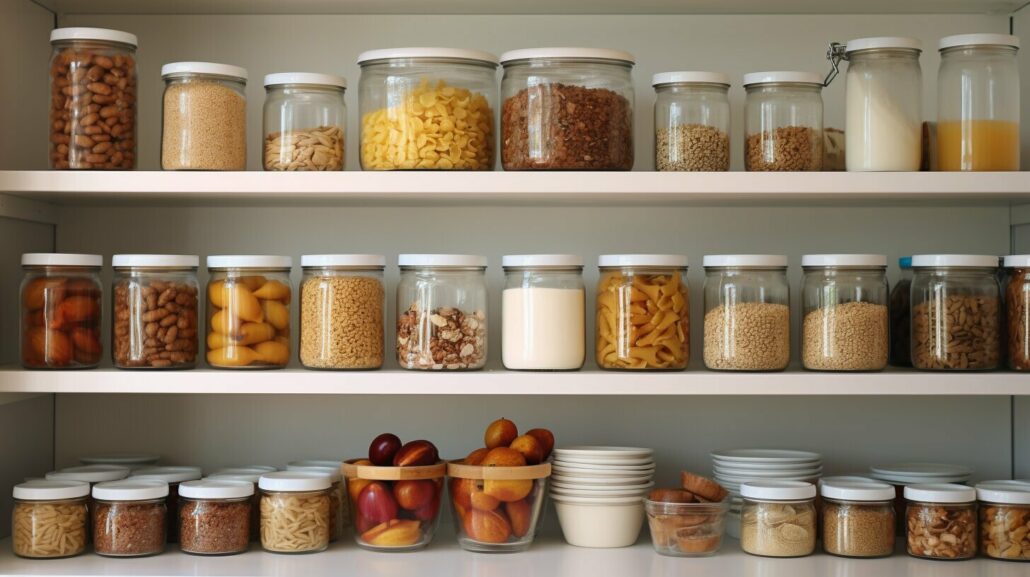Prepping financial planning encompasses an array of factors that ultimately impact your monthly prepping funds. How much should you spend per month prepping? Determining your preparedness budgeting depends on a realistic understanding of your expenses and income. A well-crafted budget facilitates savings for emergencies and prepping needs without compromising financial stability. By adopting a structured approach to budgeting, you can strike the right balance between preparedness and everyday financial obligations.
Key Takeaways
- Consider your income and expenses when determining your monthly prepping funds.
- Adopt a structured approach to budgeting, such as the 50/30/20 rule.
- Differentiate between essential prepping needs and wants.
- Account for savings, emergency funds, and debt repayment in your prepping budget.
- Prioritize high-quality essential items over non-essential additions.
- Engage in low-cost preparedness activities to enhance your prepping without imposing significant financial burdens.
Understanding the Basics of Prepping Budgets
A prepping budget is a financial plan dedicated to allocating funds for preparedness-related expenses. It involves a clear understanding of after-tax income and conscientious categorization of expenses into needs, wants, and savings. The essence of a budget in prepping is ensuring funds are directed towards both immediate survival needs and long-term sustainability without sacrificing financial security.
The Concept of a Budget in Prepping
Prepping finance management starts with a financial self-assessment to determine the available amount of income that can be spent on prepping per month. This approach ensures the budget is aligned with practical needs and helps avoid overspending on items that are not crucial to survival.
| Prepping Budget Component | Description |
|---|---|
| Income | Assessing monthly income after deducting taxes and other deductions, including side gig earnings. |
| Expenses | Identifying fixed and variable expenses to ensure accurate budget allocation. |
| Needs vs. Wants | Differentiating essential prepping items from non-essential luxuries to prioritize spending. |
| Savings | Ensuring a portion of income is dedicated to building an emergency fund and long-term financial stability. |
Assessing Monthly Income for Prepping
To assess monthly income for prepping, individuals should calculate their take-home pay, including additional sources such as side gigs after deducting taxes and business expenses. It is integral to differentiate between fixed expenses, such as rent, and utilities, and variable expenses, which could include prepping supplies. Accurate income assessment is crucial for determining the portion of funds available for prepping activities.
Proper income assessment is the foundation of a sustainable prepping budget, allowing for strategic allocation of funds towards essential survival needs.
Identifying Prepping Needs vs. Wants
It’s important to distinguish between essential prepping needs, such as basic food supplies, water purification, and shelter, versus wants which may encompass non-essential gear and luxuries. The ultimate goal is to prioritize the essentials that ensure survival and operational capability in emergencies while considering the inclusion of wants within the limits of one’s prepping budget.
- Needs: Food, water, medical supplies, shelter
- Wants: Advanced gear, comfort items, non-essential tools
By understanding the basics of prepping budgets and prioritizing essential needs over non-essential wants, individuals can create a sustainable financial plan that supports their preparedness journey without compromising overall financial health.
Adopting the 50/30/20 Budgeting Rule for Preppers
The 50/30/20 budgeting rule is an effective approach that can help preppers allocate their prepping budget while working towards achieving financial freedom. This simple yet powerful budgeting rule recommends dividing after-tax income into three categories: necessities, desires, and savings or debt repayment. Specifically, preppers should allocate 50% towards necessities, 30% to desires, and a minimum of 20% towards savings and debt repayment.
“The 50/30/20 budgeting rule offers a framework for managing money effectively and contributes to financial freedom.”
Incorporating the 50/30/20 budgeting rule into a prepping strategy starts with understanding how to allocate funds for each category. The breakdown is as follows:
- Necessities (50%): This category includes essential living expenses such as housing, food, utilities, insurance, healthcare, and minimum loan payments.
- Desires (30%): This portion of the budget covers discretionary spending, including additional prepping materials, recreational activities, and non-essential items.
- Savings and Debt Repayment (20%): Dedicated to saving for emergencies, retirement, and extra debt repayment, this category plays a crucial role in achieving long-term financial stability.
By adopting the 50/30/20 budgeting rule, preppers can gain greater control over their finances while ensuring they set aside sufficient funds for necessary prepping activities. This approach promotes responsible spending habits, reduces financial stress, and supports overall financial freedom.
| Category | Allocation | Examples |
|---|---|---|
| Necessities | 50% | Housing, food, utilities, insurance, minimum loan payments |
| Desires | 30% | Additional prepping materials, recreational activities, non-essential items |
| Savings and Debt Repayment | 20% | Emergency savings, retirement funds, extra debt repayment |
The key to successfully implementing the 50/30/20 budgeting rule is consistent tracking and regular adjustment of expenses based on changing financial situations or prepping goals. By remaining diligent in monitoring and managing the allocation of finances, preppers can maintain a sustainable approach to budgeting for both daily life and emergency preparedness.
Allocating Funds Strategically for Preparedness
To allocate funds strategically for preparedness, individuals must first calculate their monthly prepping costs, accounting for factors like food storage, emergency kits, and training expenses. This step involves the assessment of both fixed and variable prepping-related expenses, determining average monthly costs, and setting prioritized allocations within the overall budget.
Calculating Prepping Costs Per Month
Begin by listing out all the expenditures related to prepping, including essential items such as food, water filters, and medical supplies, as well as non-essential items that may enhance your preparedness level. Divide these expenses into fixed and variable categories for better clarity.
| Expense Category | Examples |
|---|---|
| Fixed Expenses | Rent for storage, insurance premiums |
| Variable Expenses | One-time purchases, upgrades, training costs |
Compute the average monthly costs for your fixed and variable expenses and allocate a portion of your budget for each category. This initial calculation will provide a baseline for determining how much money you should dedicate to prepping each month.
Balancing Prepping with Daily Financial Obligations
Achieving a balance between prepping and daily financial obligations requires mindful budget adjustments and continuous monitoring. Expenditures beyond one’s income necessitate cost-cutting in variable expenses or increasing savings through additional revenue streams. Ensuring a clear distinction between fixed necessities and flexible expenditures is critical to maintaining financial equilibrium and incorporating prepping expenses into your financial plan.
- Review your overall budget to identify areas of potential savings and adjustments.
- Monitor your spending habits regularly to avoid overspending on non-prepping related expenses.
- Consider additional sources of income, such as side gigs or investments, to supplement your budget for prepping.
By carefully calculating prepping costs per month and finding equilibrium between daily financial obligations and prepping expenditures, you can create a sustainable financial plan focused on preparedness without jeopardizing your current financial stability.
Setting Realistic Prepping Goals to Avoid Financial Strain
When it comes to setting realistic prepping goals, understanding your current financial situation is essential. By taking a closer look at your spending patterns and assessing your means, you can devise a prepping strategy that provides for both immediate and long-term needs without causing financial strain. In this section, we discuss the importance of finding the balance between prepping and daily expenses, and offer tips on how to make informed decisions for sustainable preparedness.
“Setting achievable prepping goals involves a realistic assessment of one’s financial situation and understanding current spending patterns without idealizing potential savings or disregarding occasional splurges.”
Effective prepping requires financial self-awareness, and a solid understanding of your income and expenses. Avoid overestimating potential savings or underestimating costs, and instead focus on creating a prepping budget that mirrors your actual spending habits. This means taking into account all sources of income, fixed expenses (like rent and insurance), and variable expenses (such as food, entertainment, and prepping supplies).
To manage your prepping funds and avoid financial strain, consider the following tips:
- Set specific and measurable financial goals for both short-term and long-term prepping needs.
- Create a monthly budget outlining your prepping expenses, and make adjustments as needed to accommodate changes in your situation.
- Regularly review your spending habits and make necessary adjustments to ensure you are sticking to your prepping budget.
- Ensure your prepping funds do not come at the expense of essential daily living expenses or long-term financial goals, such as retirement savings.
- Be open to modifying your prepping plan, as over-preparing or investing in unnecessary items may lead to financial strain and increased stress.
It is crucial to remember that prepping is not a one-size-fits-all endeavor. Your preparedness goals and strategy should be tailored to your unique financial situation, risk tolerance, and lifestyle preferences. By setting realistic prepping goals and making adjustments as needed, you can build a sustainable plan that supports both prepping and unexpected non-prepping expenses, ensuring that you are well-prepared for emergencies without jeopardizing your financial well-being.
Preparing on a Budget: Tips to Minimize Monthly Prepping Expenses
Prepping for emergencies doesn’t have to be expensive. With a few creative strategies, you can minimize your monthly prepping expenses while still being adequately prepared for potential disasters. In this section, we’ll discuss some cost-effective approaches to prepping on a budget, including DIY prepping solutions and tips on identifying bargains and smart investments.
Opting for DIY Prepping Solutions
One of the most effective ways to reduce your prepping expenses is to explore DIY prepping solutions. By focusing on homemade and self-taught options, you can save money and become more self-reliant. Consider the following:
- Craft homemade survival kits using everyday items from your pantry and medicine cabinet.
- Learn invaluable skills like foraging, basic carpentry, and gardening, which can be lifesaving in emergencies.
- Repurpose and upcycle common household items into useful prepping tools, such as turning plastic bottles into water filters or old clothing into emergency blankets.
By embracing these cost-saving DIY prepping solutions, you can minimize your monthly prepping expenses while still building a solid foundation of preparedness.
Identifying Bargains and Smart Investments in Prepping
Finding bargains and making smart investments can significantly reduce your prepping expenses, allowing you to get the most value out of your budget. Keep the following tips in mind:
- Seek out sales, discounts, and bulk purchase options for essential prepping supplies, such as non-perishable food items and water filtration devices.
- Invest in high-quality, durable, and multipurpose gear that can stand the test of time and reduce the need for frequent replacements.
- Research before purchasing to ensure you’re getting the best value for your money. Online reviews and prepper forums can be a valuable resource for gathering insights and recommendations from experienced preppers.
“A penny saved is a penny earned.” – Benjamin Franklin
Regularly reassess and adjust your budget to accommodate your findings, and make the necessary changes to improve your prepping readiness without overspending. By incorporating these cost-efficient prepping tactics, you can stretch your budget further and achieve a greater level of preparedness without sacrificing financial stability.
Emergency Funds: How Much to Reserve for the Unexpected
Establishing an emergency fund is an essential component of any prepping budget and overall financial plan. These funds serve as a safety net for unexpected events, helping individuals avoid accumulating further debt and providing peace of mind.
The general consensus is to aim for a minimum of $500 in your emergency fund to cover short-term emergencies, such as vehicle repairs or medical expenses. However, it’s advisable to continue building this reserve to cover several months’ worth of essential living expenses. This proactive savings strategy caters to potential job loss, natural disasters, or prolonged emergencies that may impact your regular income.
Setting aside money for emergencies doesn’t mean neglecting your prepping activities. It’s about striking a balance that ensures financial stability while remaining prepared for the unexpected.
Here are some recommendations on how much to reserve in your emergency fund:
- Start with an initial goal of $500, which can cover most minor emergencies.
- Gradually increase your savings to cover at least three to six months of living expenses, factoring in costs such as rent, utilities, groceries, insurance, and minimum debt payments.
- Consider boosting your fund even further if you have dependents, irregular income, or anticipate potential financial challenges in the future.
Ultimately, the amount you allocate to your emergency fund will vary based on your individual circumstances and financial commitments. However, it’s crucial to prioritize building and maintaining this reserve to ensure you’re prepared for the unexpected while preserving financial stability.
Prepping Cost Breakdown: Essential Items vs. Non-Essential Additions
A responsible prepping cost breakdown should involve a thorough assessment of essential and non-essential items, with an emphasis on prioritizing high-quality essentials. Essentials, such as food, water, shelter, and medical supplies, are indispensable for survival during emergencies, whereas non-essentials encompass upgrades, additional comfort items, and other luxuries that may not be critical for survival.
Focusing on quality over quantity when allocating your prepping budget is crucial for long-term survival and financial sustainability. Investing in high-quality essentials ensures their reliability in emergency situations, while non-essential expenses should be considered secondary and only acquired if your budget permits. To facilitate this decision-making process, the table below outlines a cost breakdown of essential and non-essential prepping items, categorized by priority.
| Priority Level | Essential Items | Non-Essential Additions |
|---|---|---|
| 1 | Food storage (canned goods, non-perishable items, MREs) | Upgraded cooking equipment |
| 2 | Water purification (filters, purification tablets, portable purifiers) | Additional water storage containers |
| 3 | Shelter (tents, tarps, sleeping bags) | Comfortable bedding and pillows |
| 4 | Medical supplies (first aid kits, medications, antiseptic) | Extra personal hygiene products |
Deciding on Quality vs. Quantity in Prepping Supplies
When it comes to deciding between quality and quantity in prepping supplies, focus on acquiring high-quality essential items that will provide a solid foundation for survival during emergencies. While it may be tempting to stockpile large quantities of lower-priced items, it is important to remember that quality matters when your life could depend on these supplies.
For instance, investing in a durable water filter with a proven track record of effectiveness is more beneficial than purchasing a larger quantity of low-cost filters with mediocre performance. A high-quality filter can effectively remove contaminants and bacteria from water sources, ensuring potable water for an extended period. In contrast, a low-quality filter may fail to provide clean water, posing significant health risks.
In summary, prioritizing your prepping budget on acquiring high-quality essentials will guarantee reliability and effectiveness during emergencies. Non-essential items should be considered secondary and pursued only if your budget permits.
Always remember that a well-planned prepping cost breakdown is crucial for successful and sustainable prepping. By concentrating on quality over quantity, prioritizing essential items, and making informed decisions when purchasing non-essential additions, you can improve your preparedness without compromising your financial stability.
Prepping and Debt: Navigating Savings and Debt Repayment
When it comes to prepping, maintaining financial health is of utmost importance. As a prepper, the goal is not just to survive an emergency or disaster but also to thrive with stable finances. Balancing prepping needs with debt management is essential for overall preparedness. This involves prioritizing debts while simultaneously saving for prepping expenses.
Prioritizing Debts While Prepping
Addressing debts as part of a prepping strategy can help prevent exacerbating existing financial burdens. It is crucial to prioritize high-interest debts and work towards reducing or eliminating them. This way, you can focus on other aspects of financial health, such as:
- Establishing an emergency fund for unexpected expenses
- Investing in stable retirement funds
- Building a long-term savings plan for prepping materials and training
It is also essential to make the most of any available employer match on retirement funds, ensuring that you maximize your contributions and future financial security. This step is crucial before making substantial investments in prepping, as it can help maintain a sense of financial stability.
Remember, achieving financial health in prepping is a long-term process that involves smart decision-making and disciplined budget management.
Creating a structured debt repayment plan integrated with your prepping budget can help you achieve better financial health while working towards preparedness. Consider employing debt snowball or debt avalanche strategies to pay off debts more effectively. Additionally, monitor your budget regularly to make any necessary adjustments, ensuring you stay on track with debt repayment while saving for prepping needs.
In conclusion, navigating savings and debt repayment while prepping is critical for maintaining financial health. Prioritizing debts and ensuring continuous progress towards financial freedom sets the foundation for a sustainable prepping lifestyle. By embracing a long-term approach to financial planning, preppers can make informed decisions that contribute to their overall preparedness and financial stability.
Creative Prepping: Engaging in Low-Cost Preparedness Activities
While it’s crucial to allocate budget toward essential prepping items, there are several creative prepping methods that can enhance your preparedness without putting a strain on your finances. By engaging in low-cost preparedness activities, you can develop a comprehensive and cost-effective prepping strategy that remains economically viable.
One way to adopt creative prepping is to participate in community emergency response team (CERT) trainings. These trainings are often available at minimal or no cost, and equip you with valuable knowledge and skills to handle various emergency situations. Additionally, practicing survival skills such as foraging, navigation, and fire-starting can be done independently without requiring expensive gear or investments.
Utilizing free online resources is another cost-effective approach to prepping. There are numerous blogs, forums, and websites dedicated to emergency preparedness, where experts share their know-how and tips. You can also consider exchanging skills with other preppers or joining a local prepping group, which allows you to build connections, foster mutual support, and learn from the experiences of others.
Incorporating these low-cost preparedness activities into your prepping strategy will ensure that your approach remains financially sustainable, while still enabling you to be well-equipped for potential emergencies. Remember to keep a keen eye on your budget, prioritize essential items, and seek creative methods to enhance your prepping without overextending your financial limitations.










